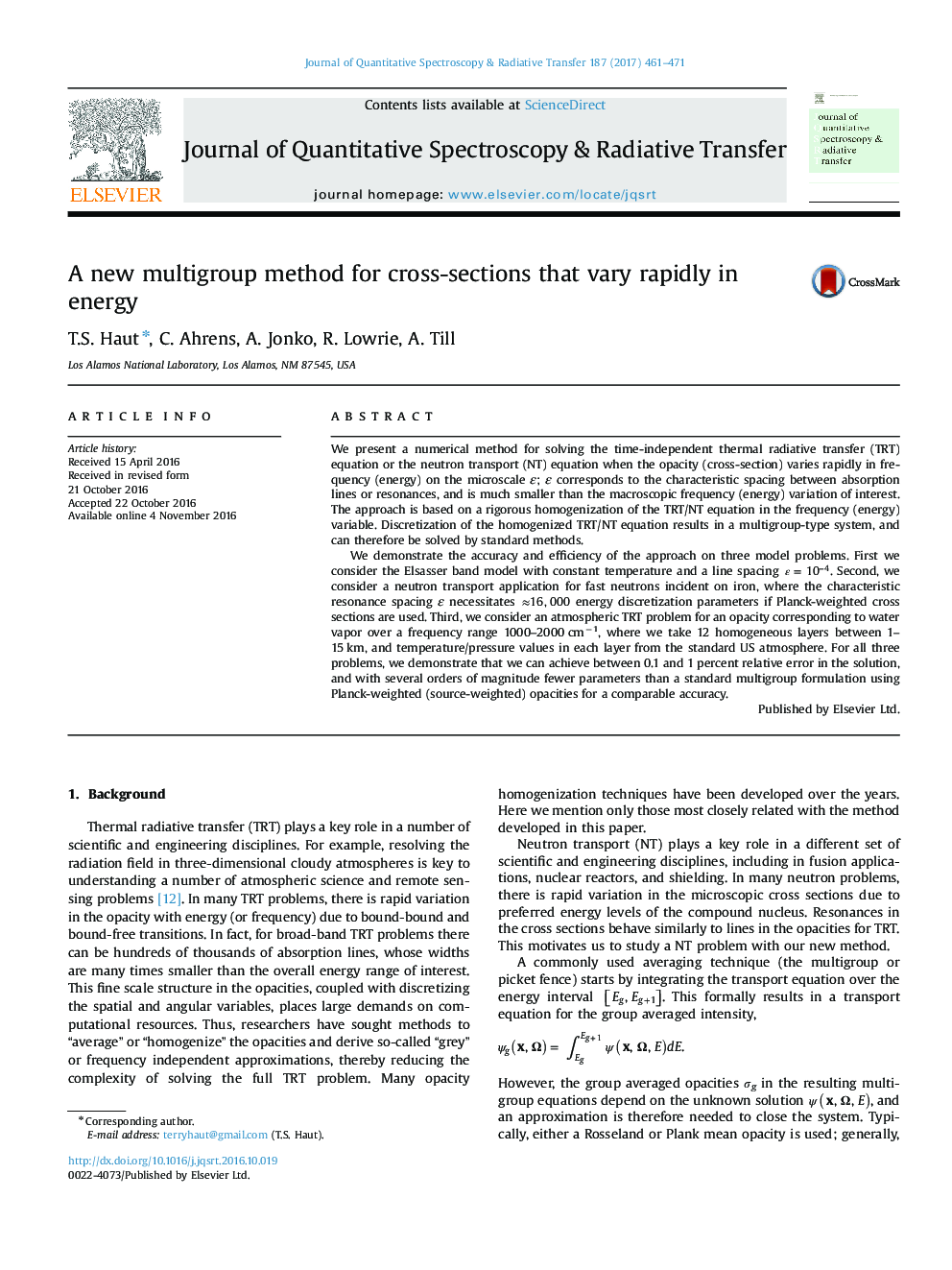| کد مقاله | کد نشریه | سال انتشار | مقاله انگلیسی | نسخه تمام متن |
|---|---|---|---|---|
| 5427422 | 1508628 | 2017 | 11 صفحه PDF | دانلود رایگان |
- Derive a new homogenized equation for the thermal radiative transfer (TRT) equation.
- Based on a rigorous homogenization of the TRT/NT equation in the frequency variable.
- Discretization of the homogenized equation results in a multigroup-type system.
- Significant speedups are demonstrated on atmospheric and neutron transport problems.
We present a numerical method for solving the time-independent thermal radiative transfer (TRT) equation or the neutron transport (NT) equation when the opacity (cross-section) varies rapidly in frequency (energy) on the microscale ε; ε corresponds to the characteristic spacing between absorption lines or resonances, and is much smaller than the macroscopic frequency (energy) variation of interest. The approach is based on a rigorous homogenization of the TRT/NT equation in the frequency (energy) variable. Discretization of the homogenized TRT/NT equation results in a multigroup-type system, and can therefore be solved by standard methods.We demonstrate the accuracy and efficiency of the approach on three model problems. First we consider the Elsasser band model with constant temperature and a line spacing ε=10â4. Second, we consider a neutron transport application for fast neutrons incident on iron, where the characteristic resonance spacing ε necessitates â16,000 energy discretization parameters if Planck-weighted cross sections are used. Third, we consider an atmospheric TRT problem for an opacity corresponding to water vapor over a frequency range 1000-2000 cmâ1, where we take 12 homogeneous layers between 1-15 km, and temperature/pressure values in each layer from the standard US atmosphere. For all three problems, we demonstrate that we can achieve between 0.1 and 1 percent relative error in the solution, and with several orders of magnitude fewer parameters than a standard multigroup formulation using Planck-weighted (source-weighted) opacities for a comparable accuracy.
Journal: Journal of Quantitative Spectroscopy and Radiative Transfer - Volume 187, January 2017, Pages 461-471
